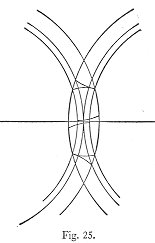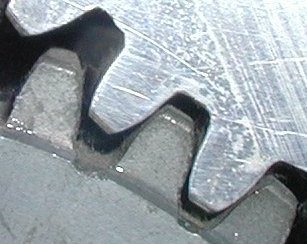Gibbs and Visualization
Today, a glimpse into the mind of J. Willard Gibbs. The University of Houston's College of Engineering presents this series about the machines that make our civilization run, and the people whose ingenuity created them.
When I spoke at Yale University a while back, I met a blind student doing his doctorate in genetics -- a field that depends heavily on pictures and patterns. What he and I talked about was visualization.
At first that may seem contradictory, but ask yourself: Who does more mental visualization: we sighted people or that student who didn't have the use of his eyes? He was obviously very good at recreating the three-dimensional world around him in his head. I ask you to try an experiment. Close your eyes and walk around your house or apartment, guiding yourself by recollection and mental reconstruction. Either you'll manage to recreate your material world in your mind, or you'll end up hopelessly lost in your own house.
Now meet another Yale student, J. Willard Gibbs. The year is 1863, and he's just completed the first mechanical engineering Ph.D. in America. His thesis deals with shaping the teeth of spur gears.
Gibbs went on to become America's greatest scientist. He didn't just contribute to fields. The entire subjects of chemical thermodynamics, vector analysis, and pre-quantum statistical thermodynamics sprang full-blown from his remarkable mind. Gibbs came from a long line of scholars. If you saw the movie Amistad, you briefly met his father, a noted linguist who worked with the stranded Africans, deciphering their language.
 So it seems strange that the young Gibbs began in the seemingly earthbound arena of engineering -- that he held significant patents for railroad brakes and couplings, and for a steam-engine governor. We'd better look at that thesis on gear teeth.
So it seems strange that the young Gibbs began in the seemingly earthbound arena of engineering -- that he held significant patents for railroad brakes and couplings, and for a steam-engine governor. We'd better look at that thesis on gear teeth.
Not one of the twenty-five illustrations in it actually depicts the complex shape of a gear tooth. These are the austere constructions of an advanced Euclidian geometry text. Gibbs writes the math that generates the shape of gear teeth, but he leaves the result to the mind's eye, his and ours.
 A biographer writes, The reader with a good mental grasp of spatial relations, who can picture ... three coincident planes ... all moving at the same time, and a point in one ... tracing curves in the other two, will have much easier going than the expert in algebraic manipulation.
A biographer writes, The reader with a good mental grasp of spatial relations, who can picture ... three coincident planes ... all moving at the same time, and a point in one ... tracing curves in the other two, will have much easier going than the expert in algebraic manipulation.
There lies, not just the secret of Gibbs's brilliance, but the link between his practical engineering and abstract science as well. For Gibbs could see without mechanical aids, and he assumed as much of his readers. I strongly suspect that he'd have been bored by the lush images flowing from a modern computer. It was all there in his mind -- a richer tapestry of images than anything gracing our two-dimensional screens today.
Gibbs leaves us with a nagging question: Could he have been what he was if he'd been raised in our world, with machines doing so much of his mental work for him? Perhaps that blind student at Yale was blessed in the same way Gibbs himself was blessed.
I'm John Lienhard, at the University of Houston, where we're interested in the way inventive minds work.
(Theme music)
Gibbs, J. W., The Early Work of Willard Gibbs in Applied Mechanics: Comprising the Text of his Hitherto Unpublished Ph.D. Thesis and Accounts of his Mechanical Inventions (with commentary by Lynde P. Wheeler, Everett O. Waters, Samuel W. Dudley, and John F. Fulton). New York: Henry Schuman, 1947.
A remarkably rich account of Gibbs's seemingly gray life was written by noted American poet Muriel Rukeyser: Willard Gibbs. Garden City, N.J.: Doubleday Duran and Co., Inc., 1942.
See also, Commentary on the Writings of J. W. Gibbs. Volumes 1 snd II (Edited by F. G. Donnan and A. Haas) New Haven: Yale University Press, 1936. [119, 1483]
For more on Gibbs, see Episode 119.
The blind graduate student, who was so influential in my developing this episode, is Matthew A. Weed, Genetics Department, Yale University.
As a matter of interest, the final version of Gibbs's thesis didn't survive. What we have is the handwritten semifinal draft which turned up in Gibbs's personal effects.